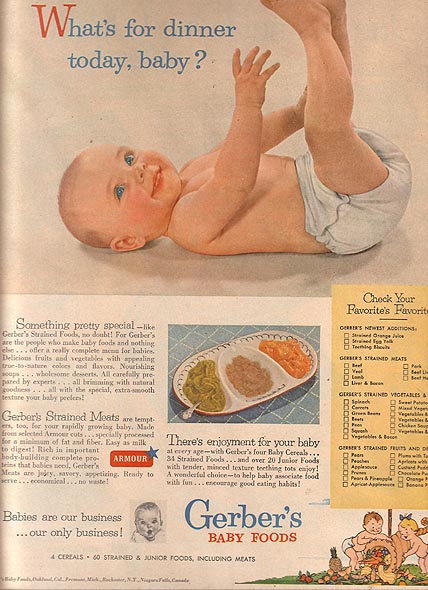Thicken baby food
Making Your Own Baby Food
Read time: 7 minutes
What to know about making your own baby food- Advantages to making your own baby food purees
- Supplies you need to get started
- Cooking methods to make homemade baby food
- Baby food puree recipes to get you started
Once your little one is ready to start solids, the next question often asked is: Do I make baby’s food or buy it? The store offers many baby food options, but making at least some of the food at home may allow for even more variety.
With a little bit of planning and use of some of the utensils you likely already have around the house, making homemade baby food doesn’t have to be as daunting as it sounds.
What are some advantages of making your baby’s pureed food?- Greater control over what you feed your baby: You can use a wider variety of ingredients that are not always available in store-bought baby food.
1,10
- Money saver! Did you know the price of 2 to 3 containers of baby food is almost equal to that of 4 to 6 pears, which can create enough pureed food for 10 or more meals for your baby?1
- May help reduce picky eating: Repeatedly offering a greater variety of foods, as well as foods the family eats (with minor changes in textures and ingredients to meet your baby’s needs), may help make your little one a more adventurous eater, even into childhood.2
Read more: Introducing Solids: First Foods & Textures
You might be worried that you need an elaborate kitchen setup and all new kitchen tools to make your baby’s purees, but the good news is that you likely have many of the tools already needed to whip up some homemade baby food!
Here is a list of some of the tools that can be used to make homemade baby food:- Vegetable peeler
- Pot for boiling or steaming
- Sheet pan for baking
- Steamer basket
- Blender or food processor
- Fork and knife
- Food mill
- Potato masher
- Strainer
- Ice cube trays
Following proper food safety is especially important when cooking for children and especially for baby’s first foods. 3 Babies are more prone to foodborne illness than older children or healthy adults, so always wash your hands, rinse the food items, clean your work area, cook foods to their recommended internal temperatures, and avoid cross-contamination.3
3 Babies are more prone to foodborne illness than older children or healthy adults, so always wash your hands, rinse the food items, clean your work area, cook foods to their recommended internal temperatures, and avoid cross-contamination.3
For more specifics on proper food safety protocols, see Food Safety for Babies and Toddlers
What cooking methods should I use when making baby food?There are many cooking options available for pureeing food for your baby. Each method has pros and cons in terms of ease and retention of nutritional value:
- Steaming: A very popular (and easy!) method, steaming allows for minimal nutrient loss and the leftover water can be used as stock for pureeing.4
- Boiling or Stewing: While also convenient, this cooking method results in greater nutrient loss into the surrounding water. To recoup these nutrients, you can use the cooking water when you make a puree or broth.
 4
4 - Baking or Roasting: Great for making large quantities in the oven. Baked food items retain a good amount of their nutrients.4,5
- Microwave Cooking: Super easy but mainly best used for only small quantities. Be aware that microwaving may lead to uneven cooking and hot spots in the food or liquids.6
- Pressure Cooking: This technique may require additional kitchen equipment but retains much of the foods’ nutrients because this method uses very little water and is fairly quick.5
- Grilling: Babies and small children can eat grilled foods. When grilling, aim for a low temperature and avoid burning or charring meats.7
- Sautéing and stir-frying: Another fast and flavorful option!
*Note that the longer you cook a food for and the higher the temperature used in cooking, the more nutrients may be lost. 5
5
Fruits, vegetables, grains, and meats can all be cooked and pureed into baby food. In fact, the American Academy of Pediatrics (AAP) states there is no specific order that foods should be introduced.8
Some foods need to be avoided as they are choking hazards. Read more on Preventing Choking
Here’s how to prepare homemade foods for your baby:VegetablesAlways cook vegetables before serving to your baby – steaming, roasting, or baking are the best methods. Once cooked, softer vegetables like sweet potatoes and squash need only be mashed with a fork or potato masher.
If the vegetable has a thick skin, like green beans or peas, push the cooked food through a strainer or sieve to remove the tougher parts. You can also just use a very powerful food processor or blender to puree the entire vegetable once cooked!
Try adding herbs such as oregano, rosemary, or dill; or spices such as cumin, ginger, or curry powder.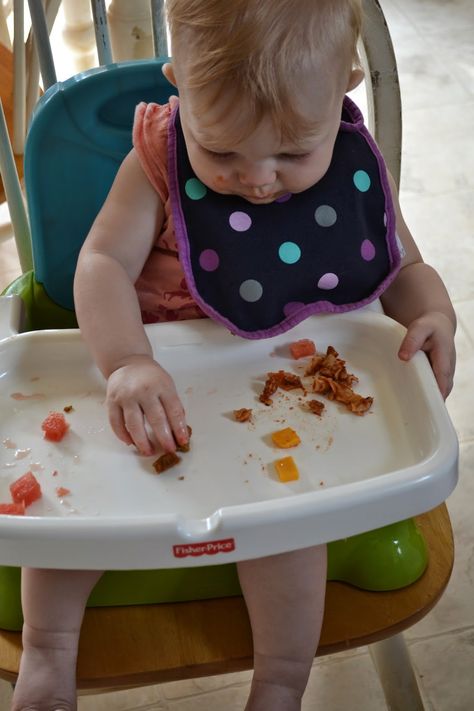
Try one of these vegetable puree recipes: Avocado and Pea Puree or Root Vegetable Puree
FruitsCertain fruits, like avocados and bananas; or very ripe pears, mango, and peaches; require no cooking before feeding to your baby. Simply peel then mash them up with a fork or blend quickly.
Other harder fruits, like apples, firmer pears, and underripe nectarines and mangos can be baked or steamed to soften them up for a puree. Simply halve or quarter your fruit of choice, remove the skin, remove the core, pit, or seeds. Place the cut fruit in a shallow baking dish with about 1 inch of water in a 400F degree oven.
Bake for 20-40 minutes, or until fruit is tender, then allow to cool before pureeing in a blender or dicing for finger food.
You can even sprinkle the fruit with ginger, nutmeg, or cinnamon!
Fruit puree recipes to try: Orange Sunny Soup or Beet and Cantaloupe Puree
Grains and CerealsYou can make your own baby cereal at home using whole grains such as oatmeal, brown rice, or barley.
Finely grind the uncooked grain using a coffee grinder, food processor, or blender. Then cook the powder in water for 15 minutes until you get a thin, soupy consistency. You can also cook the raw grain whole, as you normally would for yourself, and then puree or mash. But this method can sometimes create a pasty consistency.
Try one of these homemade cereal recipes: Whole Ancient Grain Baby Cereal or Strawberry Quinoa Cereal
MeatYes, you can even puree meat for your baby using a food mill or blender. Cook the meat to well-done before pureeing (but avoid luncheon, cured, and smoked meats at this stage due to the high salt and additive content).9
Try one of these meat based baby food recipes: Avocado and Chopped Chicken or Ginger Carrot, Sweet Potato Mash and Lean Beef
.
If you have questions on how to make these recipes, or are looking for more ideas, reach out to our team of registered dietitian nutritionists and lactation consultants for free! They’re here to help on our free to live chat from Monday through Friday, from 8am–6pm (ET). Chat now!
Chat now!
Our little one’s food preferences are formed early in life, so avoiding or severely limiting these strong added flavors before the age of one is important. In fact, the 2020-2025 Dietary Guidelines for American recommends no added sugar at all before the age of 2 years.12
Additionally, you want your baby to experience and get used to the true flavors of food so that they are more likely to accept them in the future!11
Read more: Minimizing Added Sugar
Find the right texture for baby’s pureeFind the right consistency for your purees. Most babies start with thinner purees and work their way up to thicker ones as they learn to manage food in their mouth and then swallow.
- If you need to thin your puree for a younger baby, try adding reserved cooking water, no-salt-added veggie stock, prepared formula, or breastmilk.

- If you need to thicken up your puree for an older baby, it can sometimes be as simple as adding less liquid. You can also try adding baby cereal, plain whole milk yogurt, wheat germ, mashed low-sodium cottage cheese, mashed banana, pureed sweet potato, or pureed tofu.
Note that food textures can – and often do – change in the freezer. For example, certain fruits and vegetables like blueberries, pears, and eggplant contain a lot of water and can become quite runny when thawed. You may need to tinker with the consistency either before or after freezing some of these homemade purees.
Advance textures when your baby is readyAdvancing textures steadily as your baby is ready will help develop their oral motor skills as well as prepare them to be more adventurous eaters.11
Start with thinner purees and then move to thicker purees over several weeks as your baby’s chewing and swallowing skills becomes more coordinated.
Once your little one can handle thick purees, it’s time to move onto lumpy purees as they prepare for soft solids.
Read more: Introducing Solids: Different Approaches and Strategies
Storing your homemade baby foodAfter making a batch of baby food, either use the food right away or freeze it in small portions in an ice cube tray. Once frozen, pop out and place into a freezer-safe air-tight bag to help save room in your freezer. Be sure to label the bag with type of food and the date it was made.
For more information: How to Store Baby Food
Let’s Chat!We know parenting often means sleepless nights, stressful days, and countless questions and confusion, and we want to support you in your feeding journey and beyond.
Our Happy Baby Experts are a team of lactation consultants and registered dietitian nutritionists certified in infant and maternal nutrition – and they’re all moms, too, which means they’ve been there and seen that. They’re here to help on our free, live chat platform Monday through Friday, from 8am–6pm (ET).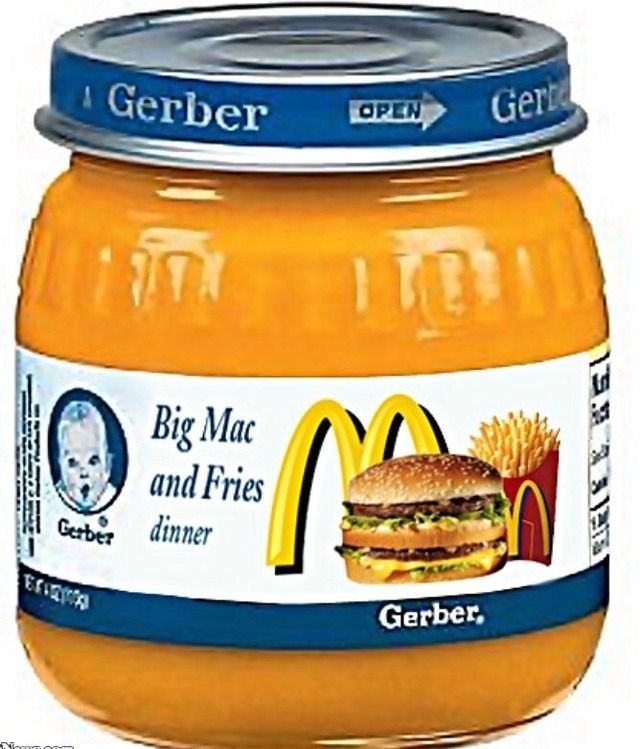 Chat Now!
Chat Now!
Read more about the experts that help write our content!
For more on this topic, check out the following articles:
Introducing Solids – Signs of Readiness
Introducing Major Food Allergens to your Infant
Introducing Solids: Baby Led Weaning
How to Make Baby Food Thicker – Baby Sensei
Follow my blog with Bloglovin
Have you found the food of your baby becomes too runny whenever you make it at home? Most of the mother out there prefers to make the food of their baby with their own hands to ensure clean and healthy preparation. I am bit sure many of them find their fresh baby food to be too thin and liquid. Not only this but most of the times food if stored in the refrigerator tends to become even runnier.
There is a particular time when the babies want to have more textures in their food and also it is necessary as well as soon as the baby undergoes development.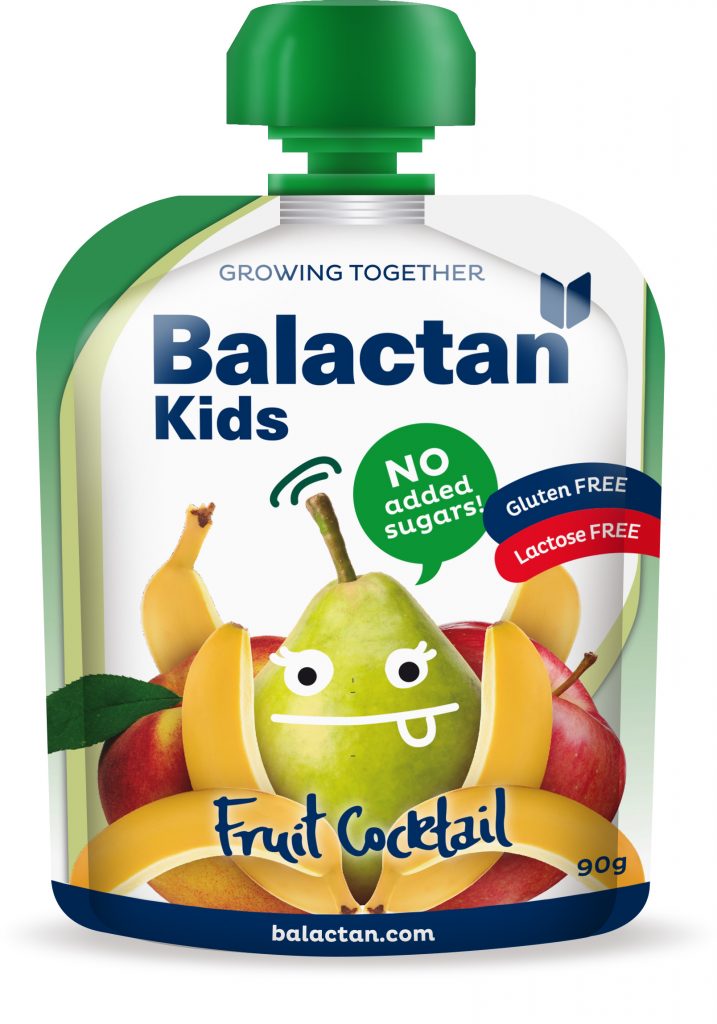 Therefore, if you are also looking for ways using which you can thicken the puree of your baby food a little more. Then keep reading along.
Therefore, if you are also looking for ways using which you can thicken the puree of your baby food a little more. Then keep reading along.
Table of Contents
Learn How to Make Baby Food ThickerThickening the baby food is not a complicated process at all; in fact, it is much easier and straightforward. There are a variety of foods which you can use to increase the texture in the diet of your baby. It doesn’t matter whether you do the process after or before freezing that is entirely your preference.
There is no particular or assured way to thicken the runny baby puree. But here, according to me, I would suggest thickening the baby food after it has been thawed. It works the best most of the times in many cases. And it is the fact that the thawed kid’s meal intends to be runnier then it was before getting freeze. Do you know why it happens; well, it is because the process of freezing tends to change the cellular structure of several foods that are used to prepare a portion of baby food.
Many fruits and vegetables are used to prepare the purees for your babies. There are many of them out there that tend to become thin and runny in texture. Some of the most common items in that particular category are Mango, eggplant, peaches, plums, pears, papaya, summer squash, zucchini, melons, and blueberries.
Reasons behind the need to thicken the baby food purees- The main reason that strengthens the point of making the food purees is that the most of the mothers slowly want to introduce a little more textures in the foods of their baby to make him gentler towards the type of food texture. It will help the babies to adapt to the natural texture of food very comfortably as we eat.

- Another reason is that if your baby knows to use the spoon and feed themselves by their own, then it is better to have the consistency of the purees a little bit thick making it cling to the spoon and allowing the kids to get the food in their mouths. Also, there will be less frustration for your kid to manage with the thick purees rather than the runny ones.
Now that we have already discussed every single detail about the thickening of the baby’s food, the only thing that is left is considering the list of ingredients that can be used to thicken the meal of your little creature in your house.
Things through which you can make the texture of the baby’s food a little bit richThere is a list of ingredients that you can use to make your babies food thick. Also, as a mother, you may be worried about the unusual kinds of stuff but no need to worry because here we are only adding natural ingredients that you can add to the baby’s food.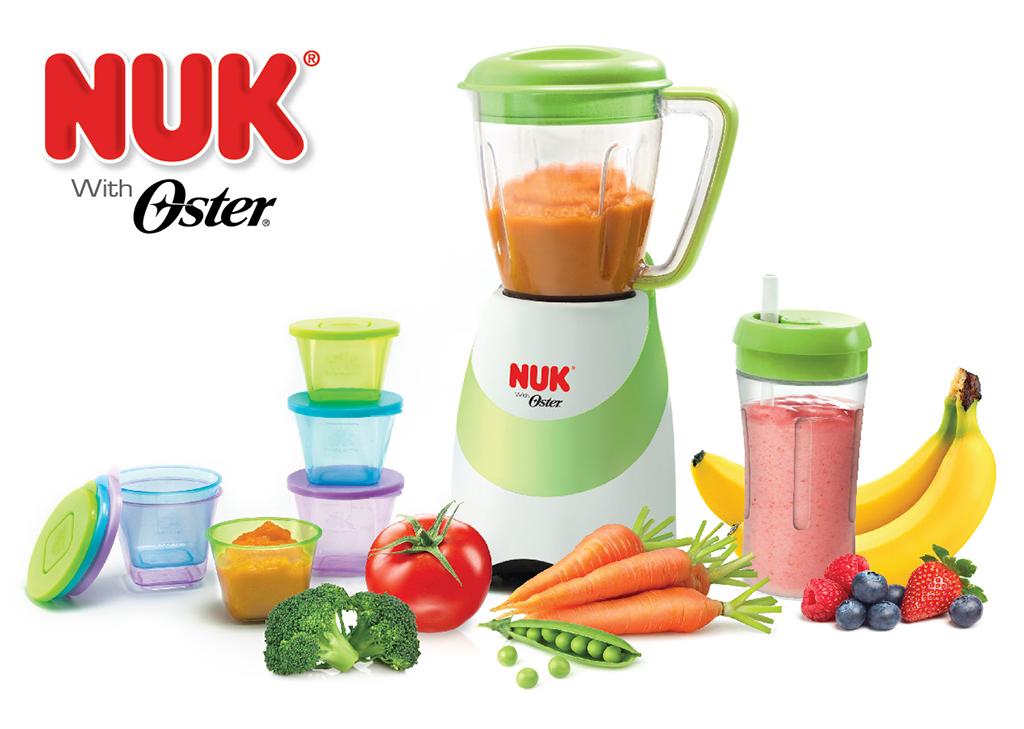 Some of these ingredients are reiterated below for you to have a look at:
Some of these ingredients are reiterated below for you to have a look at:
- Mashed potato: you can use any potato you want to, but my recommendation is to make the use of the sweet potato if you’re going to add more nutrition to the baby’s food. If you are interested in knowing why you can read about it here.
- Pureed lentils or you can even use the beans: These are one of the best ingredients if you want to give your kid a dose of protein as the lentils and the beans are rich in protein.
- Wheat germ: Wheat germ is one of the most uncomplicated ingredients to add in the meal of your baby but before, taking it into use make sure to contact a pediatrician. It is because it contains gluten, and it may be allergic to some child.
- Yogurt: Yogurt is the best choice to introduce into the meal of baby as it contains a right amount of nutrients like protein, vitamin, and calcium in it that are necessary for your child’s growth.
 Also, it tends to thicken the food so that it won’t be runny anymore.
Also, it tends to thicken the food so that it won’t be runny anymore. - Cooked oatmeal or barley: Oatmeal is an excellent source of nutrients that the babies need in the development stages of the kids. On the other hand, if we consider barley, then it is one of the most versatile food ingredients that you can also use to make the consistency of your kid’s meal thicker.
- Well, cooked egg: Eggs are also a good source of protein that tends to thicken the baby’s meal. But here make sure that you prepare the egg properly.
Try to mix the ingredient as mentioned above in the kid’s food to make the food thick as well healthy. You can also make the use of cottage cheese. If you are worried if cottage cheese can be provided to kids or not then no need to worry as they are safe, also I have discussed their pros and cons here.
That’s all for the ingredients that you can use to thicken the baby meals to proper consistency.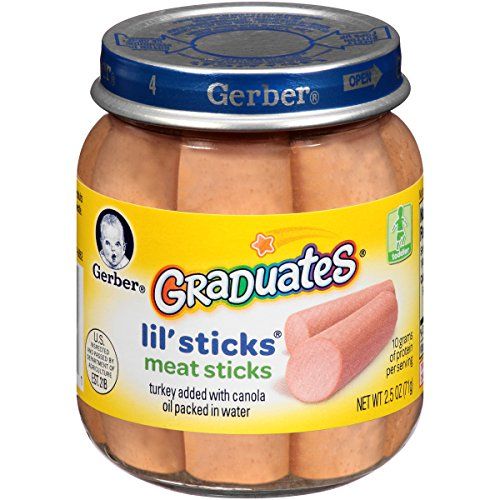 Apart from all the above, you can also add grated raw potato to the puree and when you are cooking the stuff stir it 10-15 minutes prior finishing.
Apart from all the above, you can also add grated raw potato to the puree and when you are cooking the stuff stir it 10-15 minutes prior finishing.
So, now you don’t need to worry about how to make baby food thicker as you have got a decent number of options for the particular purpose. Hence the problem of the runny and thin consistency is solved for the lovable mothers out there. Make the meal of your kid thicker using our mentioned products and give it a blast of nutrients and minerals as an advantage also.
How to make baby puree thick in consistency - Encyclopedia Baby food
Viktoriya Levchuk©When you start preparing baby puree for the first feeding, it often turns out to be too liquid. It is very inconvenient to feed the baby with such food, so many mothers are wondering: How to make baby puree thick in consistency? I will try to answer this question.
Reasons to thicken baby food
Contents:
- Some foods are too thin for baby food when cooked and blended.
 nine0012
nine0012 - Frozen baby puree may be thinner when thawed. It looked great when it was placed in the freezer, but for some reason the baby puree is now watery and unappetizing.
- Also, baby food thickens as the baby grows, to make it harder to chew and swallow.
- To put baby puree in a soft bag or pouch, puree that is too thin flows out faster and makes the baby dirty. As a result, instead of helping, the pouch brings additional problems. nine0012
- When a child learns to feed himself with a spoon, he may have difficulty managing certain foods, such as soups. By thickening his food, we save him the trouble of working hard to get the spoon to his mouth only to find it's empty!
When the first acquaintance with vegetables occurs, the usual natural thickeners cannot be used, so vegetables must be cooked properly.
If we cook on fire in ordinary water, then we try not to digest the product, we take more pieces, the product is cooked longer, but it takes less water.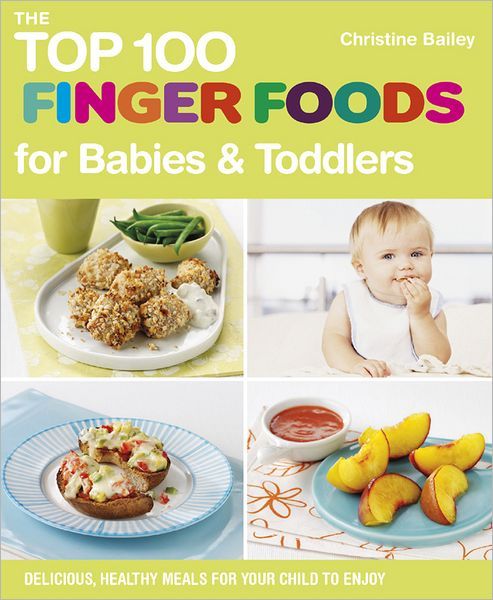 Pour the vegetable broth into a separate cup, everything to the last drop. Then just beat the vegetables with a blender, and then, if the baby puree turned out to be very thick, then add the vegetable broth. We add a little bit so as not to overdo it. Otherwise, the puree will turn out to be too liquid and you can start over. nine0005
Pour the vegetable broth into a separate cup, everything to the last drop. Then just beat the vegetables with a blender, and then, if the baby puree turned out to be very thick, then add the vegetable broth. We add a little bit so as not to overdo it. Otherwise, the puree will turn out to be too liquid and you can start over. nine0005
If the product itself turns out to be liquid, then it is better to bake it . Roasting in the oven removes extra moisture from the product, so the baby puree is thicker, richer in color and flavor.
For steamer , cut the product coarsely, then there will be less moisture, and the baby puree will be thicker.
And finally, liquid puree at the first feeding is even good. It is easier for a baby to swallow such a puree, it is flavored with a certain amount of liquid. The first meal should be slightly thicker than breast milk or formula. So do not thicken baby puree to lumps. The child is just learning to chew, he has little command of the language, and swallowing movements are still designed for liquid food, so the density of the consistency of baby puree should increase gradually as the child develops chewing and swallowing skills. nine0005
nine0005
Please note: A doctor's consultation is required before introducing any new products. Please remember to only introduce ONE new ingredient to your baby at a time. If baby puree is being prepared for the first time for a baby, then it should be introduced into complementary foods separately, BEFORE mixing with any of the thickeners listed here.
Foods that can become runny
The most common fruits and vegetables that can become too runny are:
- Tsukkini
- Brumber
- pears
- Persics
- Plum
- strawberries
- Cherry
How to thicken baby puree
This article offers natural thickeners, products that are easy to find in any kitchen. Again, I draw your attention to the fact that the thickener is a separate product that must be introduced into the baby's complementary foods. Therefore, many parents begin to use natural thickeners at the stage of the first change in consistency, about 7-8 months. By this time, most likely, several vegetables and 2 types of porridge have been introduced. Here is the first natural thickener introduced into complementary foods - this is porridge. nine0005
By this time, most likely, several vegetables and 2 types of porridge have been introduced. Here is the first natural thickener introduced into complementary foods - this is porridge. nine0005
Rice flour is traditionally used to thicken any vegetable puree. Rice does not greatly change the taste of baby puree, giving it a little rice flavor, but any density can be achieved. But homemade rice flour needs to be cooked a little, so you need to have a little experience and a couple of spoiled baby purees. Rice porridge of industrial production is ideal, it was simply added to hot vegetable puree and stirred, here, the main thing is that lumps do not form. nine0005
The older the child gets, the more natural thickeners appear in the child's diet. We list the main natural thickeners for baby food and the approximate age of their appearance in the child's diet.
- Cereal flour or flakes (Rice, oat). These are the best cereals for a more neutral flavor with a slight hint of rice or oatmeal, but other cereals can be added if desired.
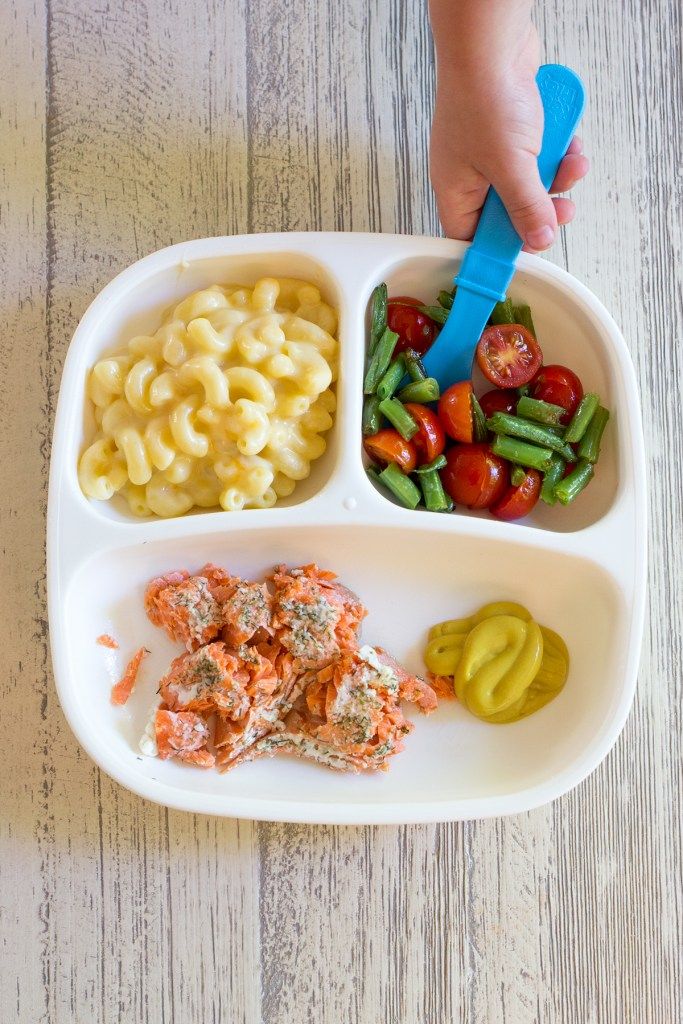 Until almost 12 months, parents are not very smart and use rice or buckwheat flour. After 12 months, as you get to know the new porridge, you can use other cereals. nine0012
Until almost 12 months, parents are not very smart and use rice or buckwheat flour. After 12 months, as you get to know the new porridge, you can use other cereals. nine0012 - Children's cereals without additives, industrial production.
- Banana. After 8 months.
- Biscuits. After 8 months.
- Yogurt. After 10 months.
- Curd. After 12 months.
- Egg yolks (cooked - hard boiled or scrambled). Use after 12 months.
- Pasta. After 10-12 months.
- Bread. nine0003 After 8 months.
- Lentils or any legumes such as peas, chickpeas, beans. After 12 months.
- White potato puree. After 7-8 months.
- Wheat germ
- Tofu. After 18-24 months.
To thicken baby soups or stews, you can try adding some grated raw potatoes - just add them about 10-15 minutes before the end of cooking time. nine0005
nine0005
Thickening characteristics of frozen baby food
Frozen baby food sometimes becomes a bit runny when thawed.
Freezing changes the cellular structure of many foods, so that foods that were ideal before freezing become a different, more liquid texture when thawed. For frozen baby purees, it's best to use a natural thickener after thawing to get a baby-friendly consistency. nine0005
It is also important to have an approximate idea of the composition of the baby puree that is planned to be prepared. For example, only a banana can be added to defrosted strawberry cubes, thus thickening the puree. Or add thick yogurt and banana to thicken the baby puree. Or you can add a fresh pear or apple to defrosted strawberries, which will lead to nothing, the puree will remain liquid, so you have to add cookies or rice flour.
Thickening of baby puree in industrial production
It is difficult to write about natural thickeners in baby purees and not write about ready-made baby food. Manufacturers of baby food also faced the problem of liquid purees, which are not suitable for all children. Although ready-made baby food is much thinner than homemade, simply because it is homogeneous, without lumps and any texture. In general, this is very correct, since it is easier to adhere to certain norms in the industrial production of baby food, because it is almost impossible to please a changeable consumer. nine0005
Manufacturers of baby food also faced the problem of liquid purees, which are not suitable for all children. Although ready-made baby food is much thinner than homemade, simply because it is homogeneous, without lumps and any texture. In general, this is very correct, since it is easier to adhere to certain norms in the industrial production of baby food, because it is almost impossible to please a changeable consumer. nine0005
But let's talk about thickeners. What do baby food manufacturers use to make baby puree thicker?
Many try to use the natural thickeners described above. More often and easier to use any cereal, for example, rice flour. It's not expensive and quite effective. However, you need to be very vigilant here, since rice flour can be added to ordinary zucchini puree, and 4+ months can be written on the label, and if the child is not familiar with zucchini or rice, then an allergic reaction can occur. I wrote about Hipp squash puree with rice flour. Of course, such a puree can be given to a child after getting acquainted with both products. nine0005
nine0005
The list of thickeners used in finished baby food was taken from the product of the product of vegetable and fruit puree:
- whole -grain flour
- wheat claps
- rice (although it is clear from the name that the puree should not contain rice)
- rice flour (for consistency) (the puree is called Mashed potatoes with salmon in a creamy sauce, as you understand, there should not be rice here)
- Rice flour (puree is called fish with potatoes)
- Wheat flour (puree is called potatoes with flounder)
- gum of an ore tree (dessert from milk and berries)
- Guar gum
- pectins
- and also E1411, and also E1411, and also E141 , E1413, E1414, E1422, E1423, E1440, etc.
That's why I will always write and repeat that we carefully read the composition, try baby puree before giving it to a child. These are the basic safety rules when using ready-made baby food. nine0005
These are the basic safety rules when using ready-made baby food. nine0005
I hope my article How to make baby puree thick in consistency turned out to be informative. Join me on Contact and Instagram!
Choosing a mixture - The First Izmailovo Clinic of Dr. Bandurina
The task of transferring an infant to artificial feeding is not an easy one, and therefore the approach must be serious. The most important points in this situation are considered to be:
- The right choice of infant formula.
- Learn how to administer it correctly by studying the feeding norms. nine0012
Choosing food for the baby
Everyone has long been accustomed to artificial feeding of children, since it has been used since ancient times, and given the modern rhythm of life, when a woman gave birth to a child, and after a month or two continues her work and career, it has become the norm. There were times and situations in life when parents simply did not have access to breast milk. Such an extremely important problem was solved in different ways. Everything depended on various factors, ranging from the well-being of the family, and ending with the achievements of scientific and technological progress in a given period of time. nine0209 So, the parents of babies got out of the situation with the lack of breast milk in different ways:
Such an extremely important problem was solved in different ways. Everything depended on various factors, ranging from the well-being of the family, and ending with the achievements of scientific and technological progress in a given period of time. nine0209 So, the parents of babies got out of the situation with the lack of breast milk in different ways:
1. They resorted to the services of a breadwinner. Only wealthy parents could afford it. Sometimes neighbor babies were fed by women who had excess milk.
2. Replaced breast milk with other foods not at all suitable for small children due to digestion difficulties. For example, chewed bread, animal milk (cow, goat), etc. This was done in extreme cases or in very poor and large families. nine0209 Many are familiar with the legend that the founders of Rome were suckled by a she-wolf. But this beautiful story had a happy ending, which cannot be said about cases from real life. The result of feeding babies with animal milk was frequent deaths, various diseases of children. Because such milk is not very suitable for the child in terms of its constituent components, because of this it is poorly digested by the child's body.
Because such milk is not very suitable for the child in terms of its constituent components, because of this it is poorly digested by the child's body.
But the problem of child feeding has always been relevant, and all the time new ways of feeding babies were invented and appeared. For example, milk began to be diluted with decoctions of cereals. Most often used rice water, oatmeal or buckwheat. Milk was made tastier with sugar and cream. A decoction of cereals gave milk nutrition and richness, and sugar added flavor. At the age of six months, children were boiled porridge in milk, grinding some cereals for this, for example, rice, buckwheat, oatmeal. nine0005
Invention and use of baby food as a substitute for breast milk
Humanity owes this to Henry Nestle, who in the 19th century invented powdered baby food, identical in composition to mother's milk. Five or six years later, such baby food was used to feed young children in seventeen countries around the world. This food was the founder of modern baby food, as we see it and know it now.
The success of the invention of Henry Nestle was stunning, but he did not stop repeating that in the first stage of life for a baby, the best food is mother's milk. Today, the World Health Organization uses this principle as a fundamental rule for the nutrition of newborns. Over time, the formula of baby food will improve and look more and more like mother's milk. Everything invented is immediately launched into production and in a short time appears on the shelves of specialized stores for children's goods. nine0209 Today, the buyer can choose from among fifty types of food items for children from zero to twelve months of age. But here new problems and questions appear - how to make the right choice so as not to harm the health of the child, which brand to give preference to, which flavoring additives will not cause adverse reactions, and in general, is it possible to believe what the manufacturer indicates on the label or packaging of infant formula. After all, food should be not only healthy, but also tasty. Not so long ago, scientists agreed that infants develop a taste and preference for food very quickly, like an adult. nine0005
Not so long ago, scientists agreed that infants develop a taste and preference for food very quickly, like an adult. nine0005
Basic rules for choosing baby food:
1. Consult a pediatrician. They should understand baby food and understand who, what is more suitable.
2. When choosing, take into account the age and physiological parameters of the baby. It is strictly forbidden to feed a child with food that does not suit him according to age criteria. For example, your baby is six months old, and the mixture is recommended for children from one year old. This can harm the health of the baby.
3. Carefully study everything that is written on the food box. If you have questions about the composition or anything else, seek help from a pediatrician or infant formula specialist. nine0005
Classification of breast milk substitutes for healthy babies
Baby food can be divided into three categories:
- These are formulas for babies in the first months of life and up to six months.
 First of all, they must be highly adapted and close in composition to mother's milk. They should not irritate the intestines, and it is very sensitive in babies during this period of life, and a complex of nutrients must also be present, since the mixture is the only source of all the nutrients for the child at the initial stage of life. nine0012
First of all, they must be highly adapted and close in composition to mother's milk. They should not irritate the intestines, and it is very sensitive in babies during this period of life, and a complex of nutrients must also be present, since the mixture is the only source of all the nutrients for the child at the initial stage of life. nine0012 - This is a follow-up meal. Nutrition for children from six months to one year. The mixtures are designed taking into account the increased risk of intestinal infections. They contain bifidobacteria. These bacteria have a beneficial effect on the formation of intestinal microflora, and, accordingly, high immunity.
- This food is for children aged 1-3 years. The composition of such complementary foods is fully selected according to the needs of the child's body.
Mixing ingredients
All infant formulas contain an adapted protein. To get it, manufacturers use cow's milk, sometimes goat's, but this is extremely rare.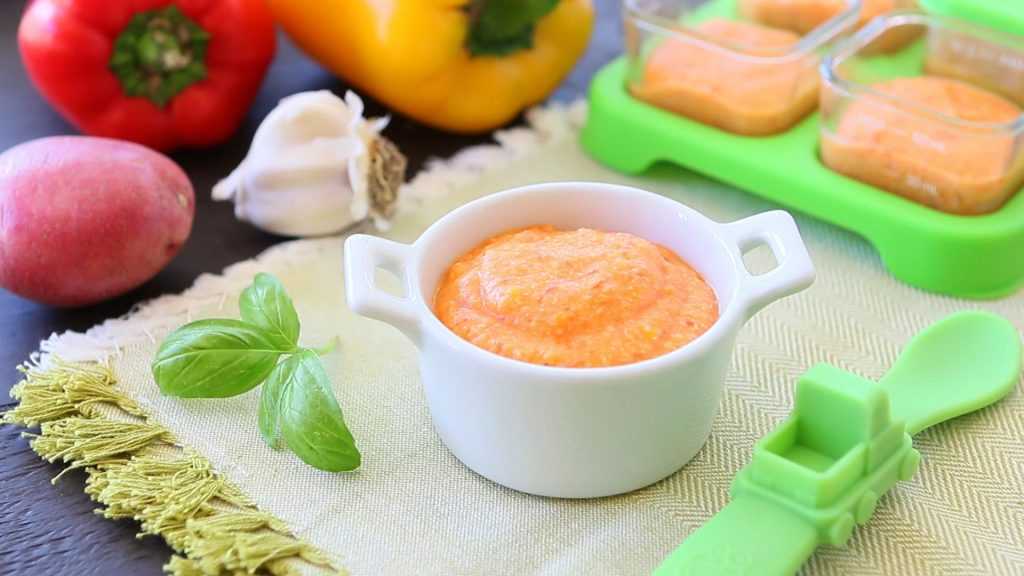 There is much more such protein in artificial nutrition than in mother's milk, and it puts a lot of stress on the kidneys. The protein can have a heterogeneous composition, which includes both casein and whey protein. Casein is very poorly digested by the baby's digestive system. Whey protein is more gentle and well accepted by the child's body. The amino acids of whey protein are identical to the amino acids of mother's milk. nine0209 In terms of numbers, the ratio of proteins and casein in the nutrition of the first degree is 60 to 40. These are very high figures. Nutrition of the second and third degree has different indicators, in which the protein gradually decreases, and casein increases. This is directly related to changes in the child's body associated with growth and development. The highest quality infant formula has a ratio of 70 to 30, no matter what grade the infant formula belongs to.
There is much more such protein in artificial nutrition than in mother's milk, and it puts a lot of stress on the kidneys. The protein can have a heterogeneous composition, which includes both casein and whey protein. Casein is very poorly digested by the baby's digestive system. Whey protein is more gentle and well accepted by the child's body. The amino acids of whey protein are identical to the amino acids of mother's milk. nine0209 In terms of numbers, the ratio of proteins and casein in the nutrition of the first degree is 60 to 40. These are very high figures. Nutrition of the second and third degree has different indicators, in which the protein gradually decreases, and casein increases. This is directly related to changes in the child's body associated with growth and development. The highest quality infant formula has a ratio of 70 to 30, no matter what grade the infant formula belongs to.
Every meal contains fat. Their presence is very important, therefore, on the packages of most mixtures there is a table of fats. You should always pay attention to her. Cow's milk is identical to mother's milk in terms of the presence of fats, but these fats differ in their structural formula. Unsaturated fats are present in cow's milk, while polyunsaturated fats dominate in mother's milk. The difference is large and obvious. Children benefit more from unsaturated fats, so manufacturers use plant-based fats in baby food. nine0209 Fats are a source of energy, vitality, an indispensable building material - they are part of the cell membrane. Linolenic acid is the building block of the body's nervous system. For the proper development of the brain, organs of vision, arachidonic, eicosapentaenoic and docosahexaenoic acids are needed. They have a positive effect on the body's immune system. These acids are in the composition of mother's milk and are absent in the milk of animals, whether it be a cow or a goat.
You should always pay attention to her. Cow's milk is identical to mother's milk in terms of the presence of fats, but these fats differ in their structural formula. Unsaturated fats are present in cow's milk, while polyunsaturated fats dominate in mother's milk. The difference is large and obvious. Children benefit more from unsaturated fats, so manufacturers use plant-based fats in baby food. nine0209 Fats are a source of energy, vitality, an indispensable building material - they are part of the cell membrane. Linolenic acid is the building block of the body's nervous system. For the proper development of the brain, organs of vision, arachidonic, eicosapentaenoic and docosahexaenoic acids are needed. They have a positive effect on the body's immune system. These acids are in the composition of mother's milk and are absent in the milk of animals, whether it be a cow or a goat.
How well infant formula will be tolerated depends on the amount of carbohydrates in it. Mom's milk is much sweeter and tastier than cow's milk. This is due to the lactose content. Lactose is a source of energy and a platform for the growth of bifidobacteria, which are necessary to support the baby's immune system. In order for lactose to be properly absorbed, special enzymes are needed. In their absence, the fermentation process begins in the intestines of the child, causing severe discomfort in the baby. nine0209 Many babies suffer from colic and abdominal pain. In case of problems with the intestines, children's doctors, in addition to drugs, often prescribe fermented milk mixtures to children. They contain a high content of bifidobacteria, which contribute to the maintenance of the body's immune system. A healthy immune system is the key to a healthy baby. Also, bifidobacteria contribute to the good absorption of lactose, which is very important.
This is due to the lactose content. Lactose is a source of energy and a platform for the growth of bifidobacteria, which are necessary to support the baby's immune system. In order for lactose to be properly absorbed, special enzymes are needed. In their absence, the fermentation process begins in the intestines of the child, causing severe discomfort in the baby. nine0209 Many babies suffer from colic and abdominal pain. In case of problems with the intestines, children's doctors, in addition to drugs, often prescribe fermented milk mixtures to children. They contain a high content of bifidobacteria, which contribute to the maintenance of the body's immune system. A healthy immune system is the key to a healthy baby. Also, bifidobacteria contribute to the good absorption of lactose, which is very important.
Some infant formulas contain maltodextrin. It is more complex than lactose and other sugar-containing components, but at the same time it is more gentle for the intestines and does not cause fermentation processes, does not contribute to bloating and normalizes children's stools. Despite the multifunctionality, it is easily digested and has a sweetish aftertaste. nine0005
Despite the multifunctionality, it is easily digested and has a sweetish aftertaste. nine0005
When choosing food for your baby, you should remember some things:
1. The sweetness of the food should be in moderation, especially for mixtures of the first degree.
2. A diet with lactose is better than a diet with regular sugar or glucose.
3. The presence of lactoalbumin is good for the baby. Lactoalbumin is a special category of protein. It helps to digest lactose, which means it promotes the growth of bifidobacteria, which, in turn, support the child's immunity. nine0005
Benefits of trace elements and vitamins
It's no secret that animal milk is less fortified than mother's milk. Therefore, when developing artificial baby food, manufacturers enrich it with vitamins and microelements.
Baby food should give the baby all the necessary vitamins and other useful substances. Useful components include vitamins such as: A, E, K, PP, lecithin, biotin, choline. Among the necessary minerals: magnesium, iodine, zinc, selenium, copper, manganese, iron. The presence of vitamins and minerals should be balanced, according to the needs of the child's body. nine0209 There is a special table of the ratio of vitamin and mineral substances. For example, in order to absorb iron, you need vitamin C, and for the absorption of calcium, you need the right proportion of phosphorus. Calcium is very important in the development of the child's body, and calcium requires a certain amount of vitamin D, which is produced with the help of sunlight.
Among the necessary minerals: magnesium, iodine, zinc, selenium, copper, manganese, iron. The presence of vitamins and minerals should be balanced, according to the needs of the child's body. nine0209 There is a special table of the ratio of vitamin and mineral substances. For example, in order to absorb iron, you need vitamin C, and for the absorption of calcium, you need the right proportion of phosphorus. Calcium is very important in the development of the child's body, and calcium requires a certain amount of vitamin D, which is produced with the help of sunlight.
Vitamin D deficiency can lead to a disease called rickets. This disease is manifested by excessive sweating and general restlessness of the child, as well as underdevelopment of muscle tissue and abnormal development of bones in general. That is why any high-quality baby food contains the daily intake of vitamin D. The daily dose of vitamin D, according to the established standards of the World Health Organization, is four hundred units. nine0209 In addition to the vitamin and mineral complex, infant formulas contain essential components. This group of substances is necessary for the proper development and growth of the baby. Essential components enter the body only with food, they are not produced independently. A representative of essential substances is taurine, which is necessary for the development of the brain and vision. Especially the baby needs taurine in the first months of life. Proper metabolism needs L-carnitine. Nucleotides are required for the development of the nervous system. To provide antioxidant protection to the baby, selenium is needed, but not in excess, otherwise you can harm the baby. Organic selenium is used in high-quality baby food - it is more beneficial. nine0209 Another unfamiliar, but important indicator is found in baby food. This is the osmolarity of the mixture. It determines the saturation of baby food with mineral and low molecular weight components. The osmality of infant formula should not exceed 280 mOsm/L.
nine0209 In addition to the vitamin and mineral complex, infant formulas contain essential components. This group of substances is necessary for the proper development and growth of the baby. Essential components enter the body only with food, they are not produced independently. A representative of essential substances is taurine, which is necessary for the development of the brain and vision. Especially the baby needs taurine in the first months of life. Proper metabolism needs L-carnitine. Nucleotides are required for the development of the nervous system. To provide antioxidant protection to the baby, selenium is needed, but not in excess, otherwise you can harm the baby. Organic selenium is used in high-quality baby food - it is more beneficial. nine0209 Another unfamiliar, but important indicator is found in baby food. This is the osmolarity of the mixture. It determines the saturation of baby food with mineral and low molecular weight components. The osmality of infant formula should not exceed 280 mOsm/L. When the norm is exceeded, there is a load on the kidneys of the child.
When the norm is exceeded, there is a load on the kidneys of the child.
Medical and special baby food
In addition to standard baby formulas, special and medical formulas are also produced. Special nutrition is intended for children with physiological characteristics. Physiological features are considered frequent regurgitation, colic and other concerns. Such food contains a special type of dietary fiber that promotes the digestion of food. Dietary fiber has a positive effect on the microflora of the stomach, eliminating colic and fermentation of food. Dietary fibers have the property of thickening the mixture, and carob gluten helps in this. Among other things, this diet contains beneficial nutrients. nine0209 For premature babies and children born with insufficient body weight, a separate nutrition line has been developed. These mixtures are more caloric, and the presence of protein and fat content is identical to that of mother's breast milk.
Partially hydrolysed nutrition is formulated to prevent allergic reactions. They are based on hydrolyzed proteins. Such nutrition is prescribed for babies who are at risk, but do not suffer from allergies and other irritations. Hydrolyzed proteins contribute to the development of tolerance, or rather, the processing of proteins. Highly hydrolyzed nutrition solves the problem of allergies in the baby. The usual protein in such baby food is replaced with soy, but this does not affect the quality of the mixture. nine0209 Feeding with special nutrition or therapeutic mixtures is permissible only with the appointment or recommendations of a pediatrician. In terms of taste, such nutrition differs significantly from standard mixtures and mother's milk.
They are based on hydrolyzed proteins. Such nutrition is prescribed for babies who are at risk, but do not suffer from allergies and other irritations. Hydrolyzed proteins contribute to the development of tolerance, or rather, the processing of proteins. Highly hydrolyzed nutrition solves the problem of allergies in the baby. The usual protein in such baby food is replaced with soy, but this does not affect the quality of the mixture. nine0209 Feeding with special nutrition or therapeutic mixtures is permissible only with the appointment or recommendations of a pediatrician. In terms of taste, such nutrition differs significantly from standard mixtures and mother's milk.
There is also a line of formulas that is made for children with intolerance to an amino acid called phenylalanine.
Babies with intestinal problems need to eat mixtures where there is no lactose or its low content.
No matter how technologies develop in the vector of production of infant formula, breast milk remains the best and most useful at a certain stage in a baby's life.









